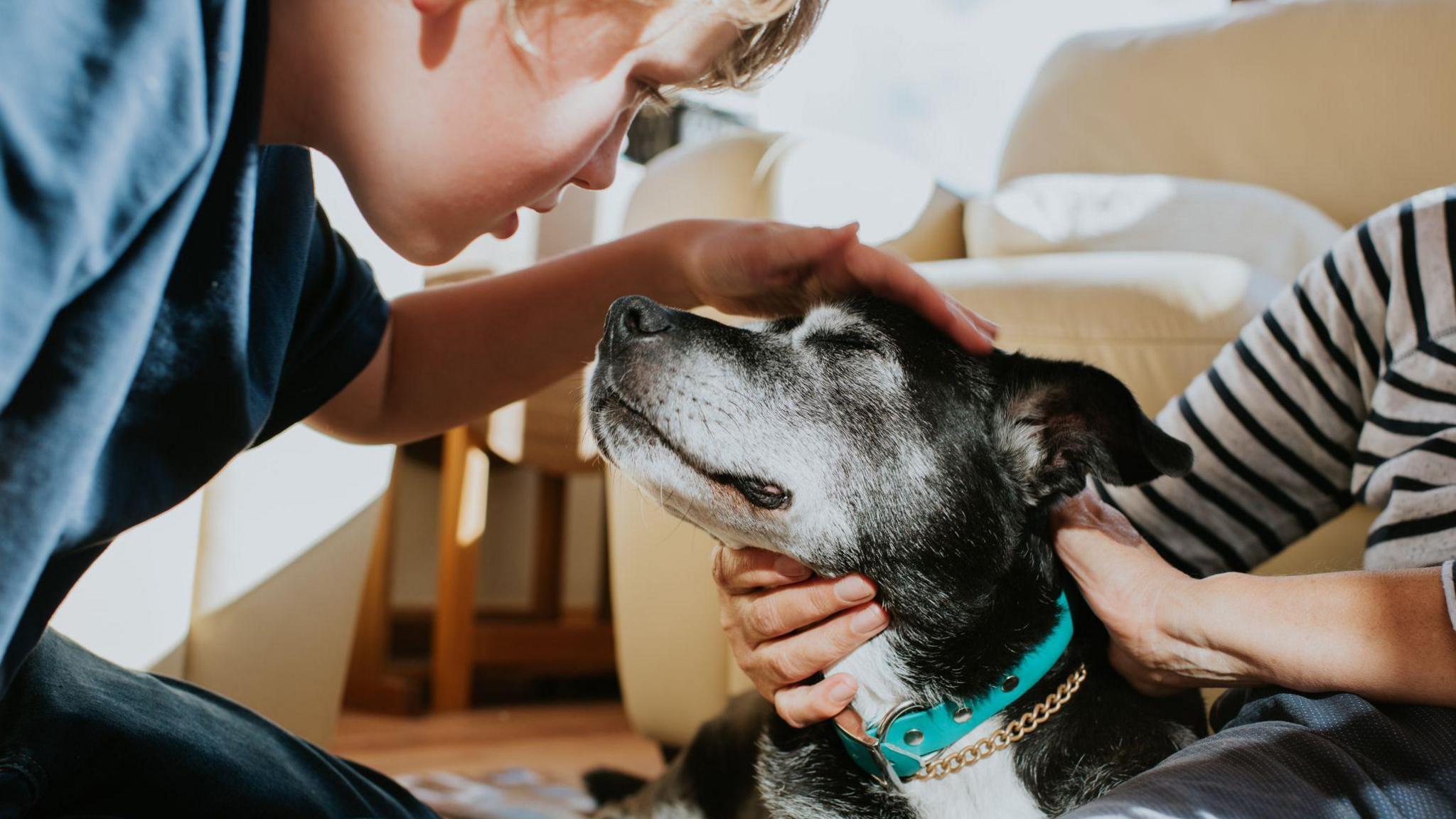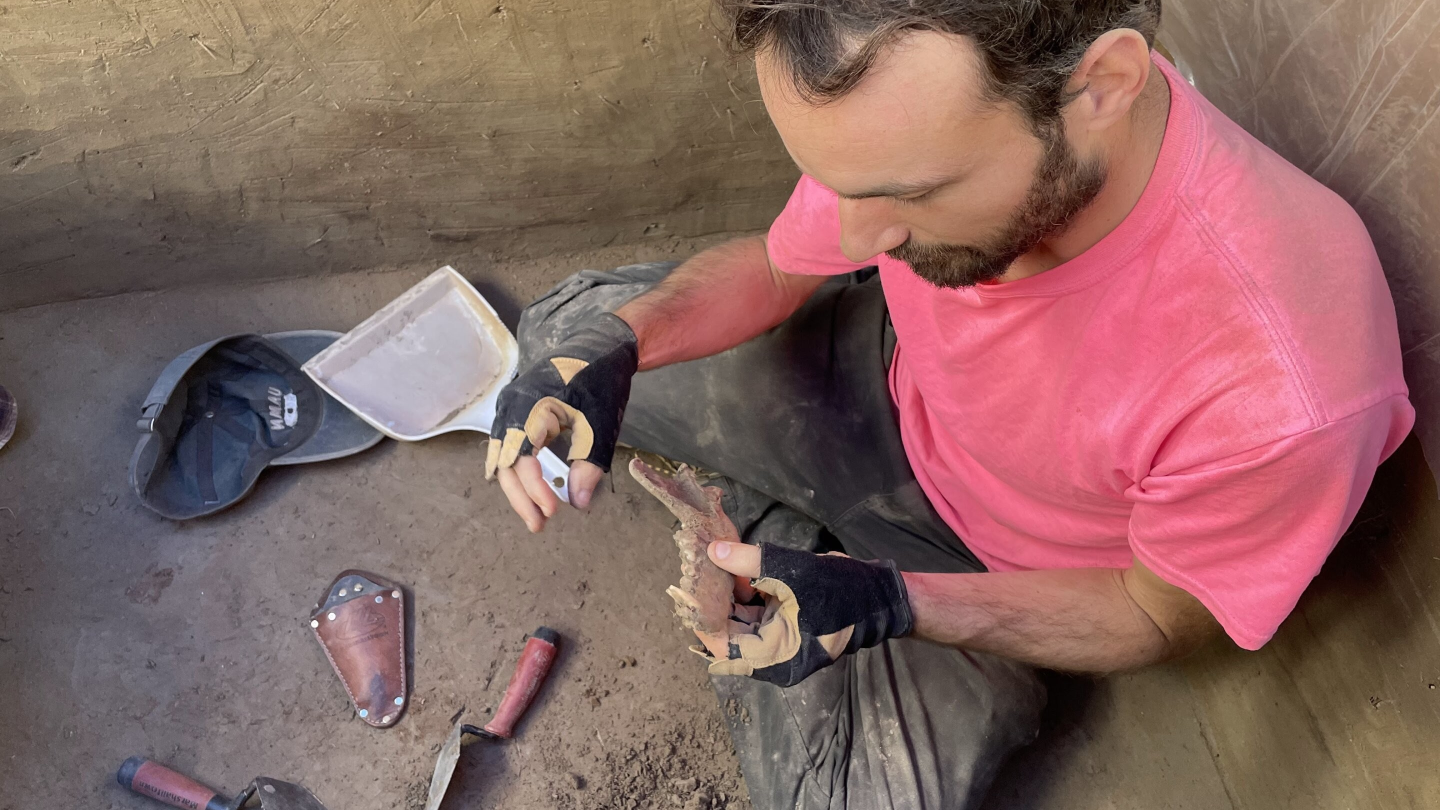Is your dog your best friend? Research shows the bond goes back 12,000 years

- Published
Is your dog your best pal?
Well researchers have found that indigenous people in North America have had canine companions for 12,000 years - much earlier than previously thought.
The team from the University of Arizona School of Anthropology, (where they study the science of human society), unearthed a lower leg bone of an adult canine at an archaeological site in Alaska, in the north west of the United States.
International Dog Day: Top five paw-some facts
- Published26 August 2024
Dogs rely on slower speech to understand humans
- Published2 October 2024
Top tips for staying safe around dogs. Video, 00:01:01
- Published7 June 2019
The scientists used radiocarbon dating to determine when the dog lived.
Carbon is found in every living thing on Earth, carbon dating is a way of telling the age of a once living thing by measuring the amount of carbon inside of it.
The method revealed that the bone was around 12,000 years old, which suggested dogs lived with humans in this area 2,000 years earlier than expected.

The study's lead author Dr. Francois Lanoe, assistant research professor on the study said: “We now have evidence that canids and people had close relationships earlier than we knew they did in the Americas".
Lanoe added that this find was "a significant contribution".
Another dig by the team in June 2023 unearthed an 8,100-year-old canine jawbone which also shows signs this dog was treated as a pet.
Full chemical tests on the jaw bone showed "substantial" evidence this dog ate salmon. They concluded this was most likely given to them by the humans as this was not a typical part of a dog's diet at the time.
The researchers say they are confident that this canine helps establish the earliest known close relationships between humans and canines in the Americas.
“Behaviourally, they seem to be like dogs, as they ate salmon provided by people,” he added. “But, genetically, they’re not related to anything we know.”
He suggested that they could have been tamed wolves rather than fully domesticated dogs.
